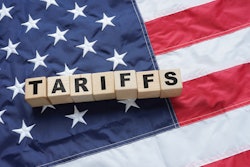
Evolving demand, rising tariffs and rapid advancements in AI are reshaping the retail landscape. A recent report produced by 7thonline details how retail leaders are adapting their strategies in 2025.
Key takeaways:
· While 36% of executives say demand has increased, a larger share (39%) report a decline. With one in 10 admitting their forecasting is poor and concerns mounting over consumer spending and rising costs, retail leaders are navigating a highly complex demand landscape.
· As consumer demand shifts, retailers are seeing the strongest growth through branded e-commerce channels, with 33% reporting increased activity on their own sites.
· More than one in five retail executives say they’re not confident in their supply chain’s ability to manage disruptions. To reduce risk, many are cutting inventory levels, diversifying suppliers and making infrastructure investments aimed at improving flexibility and resilience.
· More responsive pricing strategies (20%) and speed to market (14%) top the list of investment priorities, reflecting a push to become more agile amid ongoing supply chain uncertainty.
· With 73% of retail executives expressing concern about rising tariffs over the next year, many are already weighing how to manage increased costs. From passing costs onto consumers to renegotiating supplier terms, retailers are navigating complex decisions in an uncertain economic environment.
· Half of retail executives have yet to take specific action in response to rising tariff costs, but among those who have, the most common strategies include passing costs to customers (24%) and absorbing them internally (22%). Most retailers say they could only absorb a 25% tariff increase or less before needing to raise prices, and 35% say their first response to a new increase would be to adjust product pricing—highlighting how limited their flexibility truly is.
· One-third of retail executives are already using AI to forecast demand, and 34% expect it to play a major role in sustaining or growing profits within the next two years. While most are maintaining their current tech investments, adoption is still limited by internal expertise gaps, budget constraints and uncertainty about ROI.
· Only 16% of retailers are currently using AI for demand forecasting, despite growing recognition of its potential.
“Retailers are balancing immediate pressures with long-term priorities—from managing tariff impacts to cautiously adopting innovative technology such as AI. As 2025 unfolds, building flexibility, improving forecasting and investing in strategic planning will be key to staying competitive,” the study says.




![Pros To Know 2026 [color]](https://img.sdcexec.com/mindful/acbm/workspaces/default/uploads/2025/08/prostoknow-2026-color.mduFvhpgMk.png?auto=format%2Ccompress&bg=fff&fill-color=fff&fit=fill&h=100&q=70&w=100)








![Pros To Know 2026 [color]](https://img.sdcexec.com/mindful/acbm/workspaces/default/uploads/2025/08/prostoknow-2026-color.mduFvhpgMk.png?ar=16%3A9&auto=format%2Ccompress&bg=fff&fill-color=fff&fit=fill&h=135&q=70&w=240)







